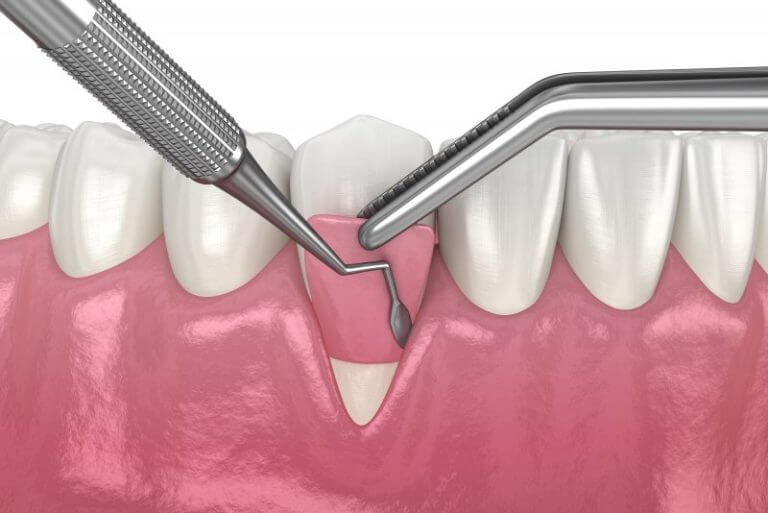3 Kinds of Gum Grafts and Why They’re Used
Gum recession is unfortunately one of the more common side effects of gum disease. As the gum tissue pulls away from the teeth, the roots become exposed, which can lead to sensitivity and an increased risk of decay. Your periodontist will likely recommend gum grafts to reverse the recession. But which graft is right for your situation? The following post explores 3 different types of gum grafts and how they might be used.
1. Free Gingival Grafts
If your gum tissue was somewhat thin to begin with, your periodontist may suggest a free gingival graft. Not only can this help address gum recession, but it can be used to reinforce the weakened gingival tissue to avoid further problems.
A free gingival graft involves removing the top layer of tissue from the roof of your mouth. Said tissue is then applied to the areas where the recession has occurred as well as any spots where the gums need to be strengthened. By the end of the procedure, not only will your tooth roots have better protection, but they’ll be held much more firmly in place thanks to the tissue around them.
2. Connective Tissue Grafts
A connective tissue graft is the most common type of gum graft. It’s often recommended for patients who are suffering from sensitive teeth due to gum recession. It can also be a good option for those who want to make cosmetic improvements to their smiles by covering up teeth that appear to be too long.
Like free gingival grafts, connective tissue grafts typically require removing a small amount of tissue from the roof of the mouth. For this procedure, though, the necessary material is taken from what’s known as the connective tissue layer, which is where the name “connective tissue graft” comes from. The tissue is applied to areas where the tooth roots have been exposed before being carefully stitched into place.
3. Allografts
While most gum grafts make use of your own tissue, some procedures known as allografts instead use grafting material taken from a donor. This is typically done if multiple areas of the mouth need to be treated at once. Grafting procedures that use your own tissue can only address a few areas of the mouth; with donor grafts, there are no such limits to worry about, allowing your periodontist to treat every spot where gum recession has occurred at once.
No matter what kind of gum graft you get, you can rest assured that it will go a long way toward protecting and improving your smile. Be sure to talk to your periodontist today if you want to learn more about the available options for gum grafting.

